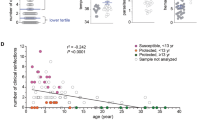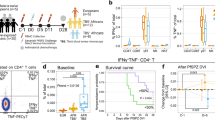Abstract
In west Africa, splenic lymphoma with villous lymphocytes and hyper-reactive malarial splenomegaly have many clinical and immunological features in common suggesting an aetiopathological link. We hypothesize that in hyper-reactive malarial splenomegaly the dysregulated immune response to repeated malaria infections results in a stimulated, proliferating pool of B cells in which perturbation of cell growth and apoptosis by environmental and other factors promotes the development of SLVL. In Africa these factors are likely to include infectious agents several of which have already been associated with B-cell non-Hodgkin’s lymphomas.
This is a preview of subscription content, access via your institution
Access options
Subscribe to this journal
Receive 12 print issues and online access
$259.00 per year
only $21.58 per issue
Buy this article
- Purchase on Springer Link
- Instant access to full article PDF
Prices may be subject to local taxes which are calculated during checkout
Similar content being viewed by others
Author information
Authors and Affiliations
Rights and permissions
About this article
Cite this article
Bates, I., Bedu-Addo, G. Chronic malaria and splenic lymphoma: clues to understanding lymphoma evolution. Leukemia 11, 2162–2167 (1997). https://doi.org/10.1038/sj.leu.2400878
Received:
Accepted:
Issue Date:
DOI: https://doi.org/10.1038/sj.leu.2400878
Keywords
This article is cited by
-
Lymphoma microenvironment: culprit or innocent?
Leukemia (2008)
-
Management of marginal zone lymphomas
Current Treatment Options in Oncology (2006)



